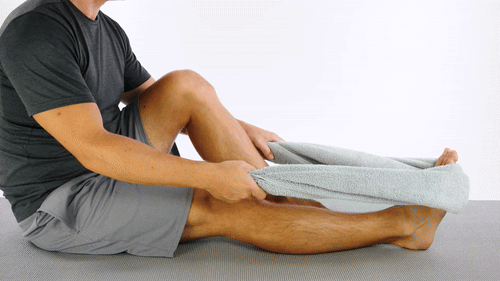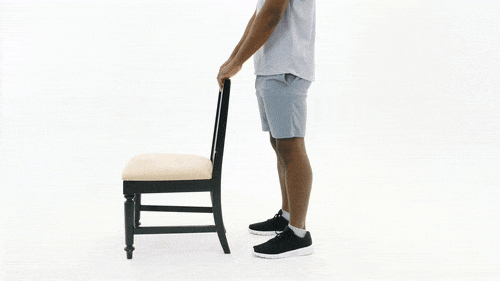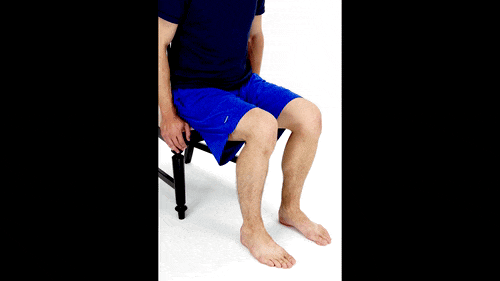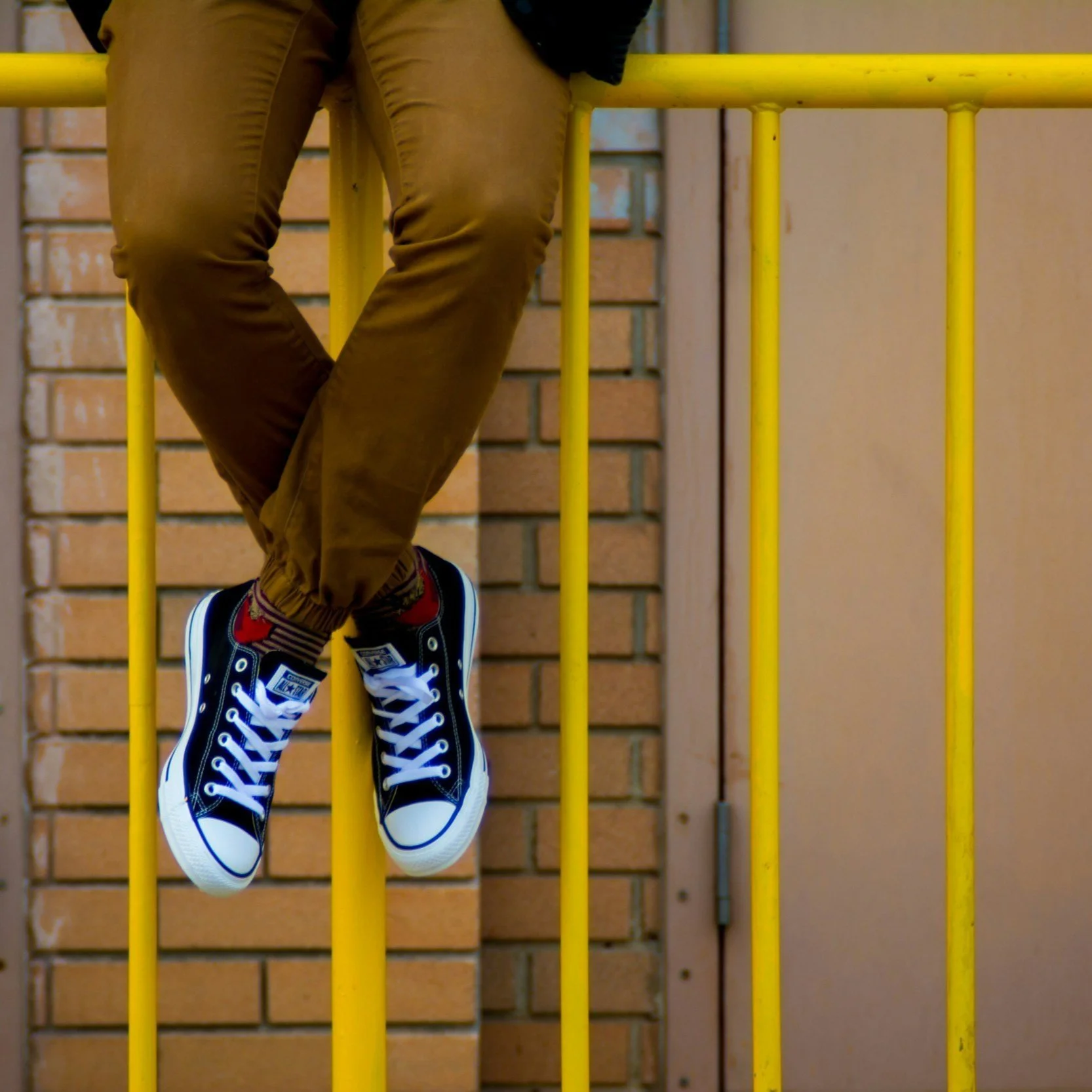5 Best Exercises for Calf Strain Recovery
Are you struggling with a Calf strain, and looking to return to your best self? Perhaps you’re not exactly sure but feel like you pulled those Calves somehow. Well, you’re not alone. Muscle injuries make up 10-55% of all injuries in sports medicine and our Calves are among the four key muscle groups commonly affected. Recovering from a Calf Strain often involves a long process that needs a lot of effort from the victim. A good exercise program is a huge part of addressing muscle injuries, and knowing how to go about it can go a long way in facilitating faster recovery.
This article aims to help you navigate around this by looking at the best exercises you can use to get better. We’ll start with a look at the key facts about Calf muscle strains before delving into the best exercises to get them back in shape.
So What Exactly is a Calf Strain?
A Calf strain is when the fibers in your calf muscles get torn. This happens when they’re stressed or stretched beyond their limits. Activities that subject your Calf muscles to a lot of loading or stress, or expose you to getting into awkward and overstretched positions are key risk factors. These include high-intensity sports that involve a lot of sprinting, jumping, and pivoting.
Inside Your Calves
Your Calves are a group of three muscles located at the rear part of your lower leg. They originate from the lower parts of the thigh bone, and upper parts of the Shin and move downwards to insert into the Achilles Tendon.
Collectively, these muscles pull your heel bone upwards, which drives your foot backward. This movement is called Plantar Flexion, which is a critical movement, especially when it comes to walking. Your Calf muscles pull on the heel and foot to initiate this movement, which allows your foot to push off the ground and propel your body forward. Now let’s take a quick look at the individual muscles.
Gastrocnemius(Gastrocs)
The largest and most powerful calf muscle.
Consists of two heads, which originate from the lower parts of the thigh bone before merging and narrowing down into the Achilles Tendon.
Soleus
Lies deep to the Gastrocs. It originates from the Upper parts of the Shinbone before narrowing down and joining the Gastrocs in the Achilles Tendon.
Plantaris
This is a short, slender muscle located on the upper parts of the lower leg. It originates from the lower parts of the Thighbone and narrows down into a long tendon that extends downwards to join the Achilles Tendon.
A calf muscle strain can involve one or more of these muscles depending on the nature and extent of the damaging forces.
Strains can be classified into three grades based on extent of damage:
Grade 1-2
The main goal is to protect the injured area, facilitate healing, and optimize muscle function. Conservative management is key, with treatment options involving:
R.I.C.E Protocol: An initial treatment acronym standing for Rest, Ice, Compression, Elevation. These help with minimizing symptoms like pain, and promoting early healing by encouraging blood flow to injured areas.
Gentle targeted stretches: Helps with minimizing pain, and preventing muscle tightness.
Strength training: Incorporated when the pain subsides to maintain or restore muscle strength and improve efficiency to reduce the risk of recurrence.
For grade 1: Despite the absence or minimal loss of muscle function, returning to the activity immediately is discouraged due to the high risk of worsening the injury. Consult a Physiotherapist if you’re unsure on how to proceed.
For grade 2: The healing process typically takes 4 weeks, and the patient is normally advised to resume previous activity after 4 weeks. An exercise program guide by a Physiotherapist is crucial at this stage.
Grade 3
Complete muscle tears typically need surgery. The muscle is immobilized for 4-6 weeks followed by intense physical rehabilitation.
1. Seated Calf Stretch
This is a classic but simple and effective exercise for all calf muscles.
How to do it
Hold a bathing towel or any solid strap; about the length of a towel.
Sit down with both legs stretched straight out in front.
Bend the unaffected leg to get the foot flat on the floor. This helps you keep things stable.
Hold both ends of the towel, hook it on the forefoot and pull your foot backwards until you feel a gentle stretch in the calf area.
Hold for 15-30 seconds, relax, and return to the starting position.
Repeat for 2-3 times.
Alternatively
Hold for 1-2 seconds before reversing to the starting position.
Repeat for 10-15 times, 2 sets.
2. Lunging Calf Stretch
This move takes advantage of your body weight to stretch your calf muscles.
How to do it
Stand tall at arm's length from a wall. Feet should be Shoulder width apart.
Lean on the wall with your palms and take a long step backward with the affected leg, just far enough to keep your foot flat on the floor.
Lunge forward on your front knee until you feel a strong stretch in the affected calf area.
Hold for 15-30 seconds, and repeat 2-3 times.
Alternatively
Hold the stretch for 1-2 seconds, 10-15 times.
3. Heel Raises
Heel Raises are a classic exercise for building strength and size in your Calf muscles. There are many variations of the exercise designed to work on the muscle in different ways depending on your primary goals. The exercise primarily works on the Gastrocnemius muscle, with smaller muscles acting as helpers.
This variation is a great option for loading the muscle in the early stages of a grade 1-2 strain. The idea is to load the muscle at a relatively moderate intensity, just enough to get it working without risking further damage. However, pay attention to your pain. There’s no need to force it if it's too painful.
Starting position
Stand tall behind a chair, feet at shoulder width apart.
Hold the chair for support.
The movement
Lift your heels straight up, keeping your forefoot strong and stable on the ground.
With control, lower the heels back down to the starting position.
Repeat 10-15 times, that’s your first set. Aim for 3-4 sets.
Once you’re quite proficient with the movement, consider upgrading by simply getting rid of the chair. This needs more balance and control, which means more force input from your calf muscles.
Step Heel Raises
Step Raises are a great way to get more out of your calves once you’ve mastered the basic Raise. The initial position is tweaked to allow your calves to operate at a more lengthened position than the basic Heel Raise. This puts the muscle at a slight mechanical disadvantage where it has to work harder to initiate and complete the movement.
Starting Position
Stand on the edge of the step board, on your forefoot. The feet should be shoulder-width apart.
Lower your heels straight down to a lower position than the edge of the board.
The Movement
Raise your heels straight up to full range.
Reverse to the starting position.
Repeat for 10-15 times.
Rest for 30 seconds to 1 minute.
Aim for 3-4 sets.
Once you get proficient with this movement, you can up the challenge by holding a Dumbbell in each hand, or simply bend the unaffected leg to increase the load on the affected side.
4. Seated Heel Raises
This exercise tweaks the position to focus on the smaller calf muscle underneath the Gastroc, Soleus. Bent Knees slacken the Gastrocs, which limits their involvement in the exercise. This places more demands on the Soleus muscle, which means more activation of its fibers.
How to do it
Starting Position
Sit on a chair, feet at Hip width, flat on the floor.
The Movement
Raise your heels, shifting your leg weight onto the forefoot.
With control, lower your heels to the starting position.
Repeat the movement for another rep.
Aim for 10-15 reps, 3-4 sets.
Again these are quite easy to upgrade using weights. Simply use cuff weights on both ankles or rest a Dumbbell on each thigh.
5. Rotated Heel Raises
These variations concentrate the load on the inner and outer parts of the Gastroc muscles.
External Rotation Heel Raises
These focus the load on your inner Gastroc muscle:
Starting Position
Stand tall, feet slightly inside shoulder-width.
Rotate your feet outwards at about 45 degrees.
The Movement
Raise your heels to full range.
Hold the top position for 1-2 seconds.
Reverse to the starting position.
Aim for 3-4 sets, 10-15 reps.
Internal Rotation Heel Raises
These emphasize your outer Gastrocs.
Starting Position
Stand tall, feet shoulder-width apart.
Rotate your feet and legs inwards.
The Movement
Raise your heels to the top position, as in the basic Heel Raise.
Reverse to the starting position.
Aim for 3-4 sets, 10-14 reps.
These variations can also be upgraded by holding a Dumbbell in each hand or attaching cuff weights to your ankles.
Getting your Calves back to firing on all cylinders after a strain is about knowing which exercises to use for optimal efficiency, and of course, a bit of grit and consistency. The exercises covered here should help you get started and build your way back to pain-free and highly functional Calf muscles.
Book Now
Struggling with a strained calf muscle? Our Physiotherapists specialize in helping you get back on track with evidence-based exercises and complementary treatment methods to make the most of your recovery. Let’s chat, give us a call today.














